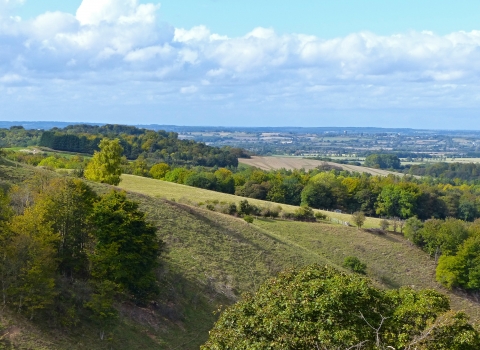Blow’s Downs in Dunstable is a rare example of chalk downland, a grassland habitat that supports a rich array of wildflowers, invertebrates, mammals and birds. Since the Second World War chalk downland has seen a dramatic decline as agricultural intensification has replaced it with an arable landscape.
For thousands of years traditional management of chalk downland has involved scrub clearance to keep it open for livestock grazing, which has also benefitted wildflowers and all the other species that depend on them. Today we use traditional management to maintain sites like Blow’s Downs for their ecological diversity, as havens for threatened wildlife.
The plants of chalk grassland such as kidney vetch, wild thyme, common rock-rose and horseshoe vetch all require open sunny conditions and do not tolerate the shade created by bushes and trees.
Over the summer our management of the site has involved removing scrub like hawthorn and bramble that would overshadow the wildflowers. Removing the scrub is a long process so don’t be alarmed if you see dead looking bushes on the downs in the spring and summer next year.
We will still have to cut down scrub during the autumn and winter months and this year’s clearance is well underway. Bramble is also an increasing problem. It is thought this is partly due to there being more nitrogen in the air these days from vehicle exhausts and agricultural fertilisers. So a lot of our winter work involves cutting this back to prevent it taking over the downland and smothering the wildflowers. Where it grows amongst the grass the cattle cannot eat the grass because the bramble would tear their tongues so it soon leads to a decline in the quality of the downland habitat.
Blow’s Downs is a wonderful site to visit in winter, affording beautiful views over South Bedfordshire. However, it is in summer that the site really comes into its own as the wildflowers bloom and butterflies, bees and other invertebrates wash the site in colour.


